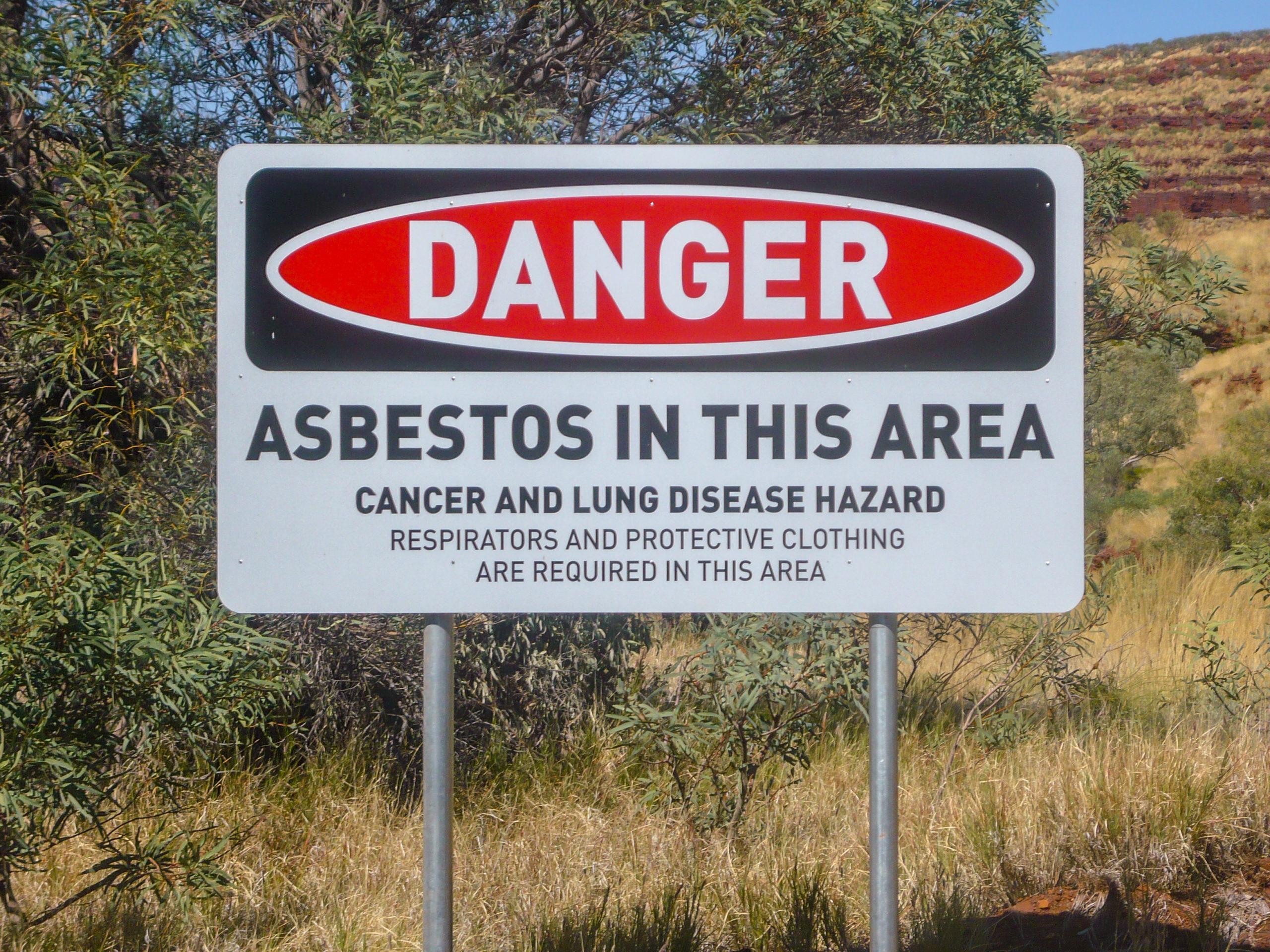Coronavirus Feels Doubly Dangerous in a Town Haunted by Asbestos

The ongoing coronavirus pandemic has caused anxiety for people across the United States, but some people have more reason to worry than others. While any given person faces similar chances of being infected if exposed to the virus, certain groups are more likely to die if they become ill. These groups include older people, people of color, and those with underlying medical conditions – especially respiratory issues.
That last group — people with underlying respiratory conditions — includes the people who live in Libby and elsewhere in Lincoln County, Montana. Lincoln County is the former home of a plant that manufactured vermiculite, a mineral used in gardening and insulation.
Though the plant closed in 1990, for decades prior to that, it spewed asbestos particles into the surrounding air, entering residents’ lungs and contaminating the dust and soil all around Lincoln County. As a result, Lincoln County has one of the highest rates of asbestos-related illnesses and deaths in the country. The residents’ exposure to asbestos also makes them especially vulnerable to dying from COVID-19.
Lincoln County Has One of the Highest Asbestos Mortality Rates
The combined effect of decades of asbestos exposure has taken a massive toll on the people of Libby and Lincoln County. Despite closing the vermiculite mine in 1990, at least 1 in 10 people in Libby has an asbestos related-illness, according to a report from National Public Radio earlier this year. These illnesses are mostly related to the lungs and patients’ respiratory system, including diseases like mesothelioma.
An older report from the National Library of Medicine indicates that at one time, Lincoln County had the second-highest death rate from asbestosis in the country. Asbestosis is a respiratory condition that results from scarring of the lungs when people inhale tiny asbestos fibers. The condition can be relatively minor or severely debilitating.
Despite the widespread damage the vermiculite mine caused in Libby and the surrounding area of Montana, the impact of that damage was mostly unknown until a series of news reports in 1999 from the Seattle Post-Intelligencer. The public was outraged once the damage was revealed, and a series of class-action suits were filed against the vermiculite mine’s owner, W.R. Grace, and Co.
As a result of all the environmental damage and catastrophic illnesses stemming from asbestos contamination, in 2002, the Environmental Protection Agency (EPA) declared Libby and Lincoln County as a Superfund site. In 2009, the EPA declared a public health emergency for the area. They’ve since spent $600 million and removed more than 1 million cubic yards of contaminated soil to make the area safer for people. Despite all the work that the EPA has done, the area is still a Superfund site. It is still considered dangerous for people who work outdoors, especially loggers, firefighters, and people who trespass on the site of the old vermiculite mine.
While the Montana county’s story is a sad one, it’s hardly unique. Closer to home, North Carolina has many sites where asbestos exposure has been recorded.
Asbestos Exposure in North Carolina
A naturally occurring mineral, asbestos is strong, flexible, and fire-resistant material—properties that seemed well suited to many industrial applications. Industries in North Carolina such as manufacturing plants, textile mills, paper plants, and utility plants used asbestos in their facilities or processes from the 1900s through the 1980s. Asbestos was also commonly used in building materials such as roofing, joint compound, floor tiles, and insulation so many older buildings still contain asbestos. Asbestos has also been found in talc products such as baby powder and body powder.
Companies that mined, manufactured, or sold asbestos failed to warn of the health issues associated with breathing asbestos, though they knew of the health risks decades ago. Scientific reports showed that asbestos caused lung diseases in the 1920s. In fact, North Carolina law provided compensation for workers with the asbestos-related scarring called asbestosis starting in 1928.
As the proof of asbestos’s relationship to diseases such as lung cancer and mesothelioma mounted, the federal Occupational Safety and Health Administration started restricting workplace exposure to asbestos in general industry in 1972 to protect workers. By then, millions of workers in North Carolina and across the U.S. had been exposed to asbestos in workplaces. Many developed respiratory issues decades later including mesothelioma, cancer that develops in the lining of the lungs or abdominal cavity 20 to 40 years after exposure, and lung cancer itself.
North Carolina-based companies such as DuPont, Weyerhauser, Duke Power, CP&L, Ecusta Paper Mills, Champion Paper, Burlington Industries, Cone Mills, and Cannon Mills are among the many asbestos exposure industrial sites that have been documented across the state.
Workers who have been diagnosed with lung scarrings like asbestosis, lung cancer, esophageal cancer, mesothelioma, and other asbestos diseases decades after working in a manufacturing plant, mill, power plant or other industry may have a right to receive compensation from the asbestos manufacturers that put profits ahead of public safety and receive additional compensation including workers’ compensation benefits for medical bills, drug costs, lost wages, funeral bills and other losses.
Exposure to Asbestos Makes People More Vulnerable to COVID-19 Complications
As previously noted, most asbestos-related illnesses have to do with patients’ lungs and their respiratory symptoms.
Unfortunately for people exposed to asbestos and who’ve become ill, many of the worst complications from COVID-19 also have to do with patients’ lungs and respiratory systems. For patients whose lungs have already been damaged by asbestos exposure, they’re less able to tolerate additional strain on their respiratory systems. This means that people with asbestos diseases like asbestosis, esophageal cancer, lung cancer, and mesothelioma run a greater risk of developing serious complications if they also become infected with COVID-19.
Recovery from COVID-19 More Difficult with Underlying Lung Disease
Just as having an existing lung condition makes fighting off COVID-19 more of a challenge, it also may make for a longer and more difficult recovery from COVID-19.
The Mayo Clinic reports that some of the most common long-term impacts of a COVID-19 infection include fatigue, cough, shortness of breath, headaches, and joint pain. These symptoms are also common in people dealing with asbestos-related diseases, effectively dealing with a double dose of respiratory problems.
If you are dealing with respiratory disease related to asbestos exposure in North Carolina, you are not alone.
How Can Ward Black Law Help?
The attorneys at Ward Black Law have successfully settled asbestos injury claims for more than 1000 North Carolinians over the last 25 years. The experience of our asbestos lawyers and asbestos paralegals is focused on maximizing our client settlements for all kinds of asbestos exposures.
Our firm has been named to “Best Lawyers” in the Triad by US News & World Reports for more than ten years in a row. Attorney Janet Ward Black has been named “Personal Injury Lawyer of the Year” for the Triad by US News & World Report in 2020 and has been named in “Best Lawyers” for over 17 years.
Our asbestos lawyers and staff have more than 200 years of combined asbestos claims experience for people in North Carolina. When you hire our firm, you’re getting a team that will fight for you and your family and pursue as many avenues of compensation as possible for you.
Call or text us at 336-502-6208. We can let you know if we can help free of charge. You can also visit our contact page here.
